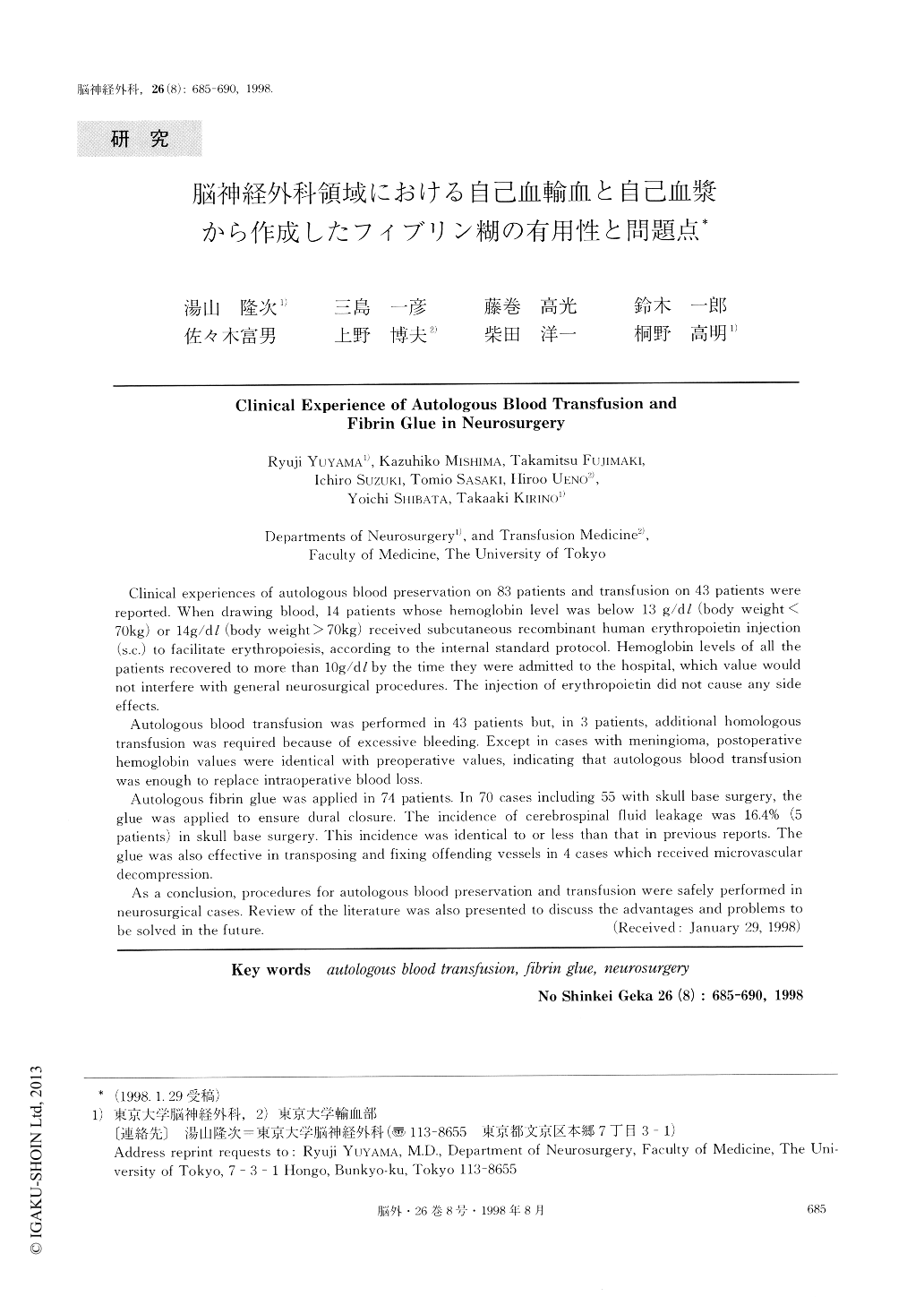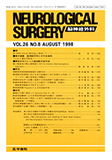Japanese
English
- 有料閲覧
- Abstract 文献概要
- 1ページ目 Look Inside
I.はじめに
一定量以上の出血を伴う手術には何らかの手段の輸血が不可欠であるが,同種血輸血には輸血後肝炎,HIV(human immunodeficiency virus)感染,GVHD(graft versus host disease),溶血免疫反応などの危険を伴う.特にHIV感染に関しては,国内に於いて輸血後感染が報告され社会問題にもなっている.また未確認微生物感染症の恐れもある.それらの危険を回避するために,近年自己血輸血を導入する施設は増加している.
しかし,脳神経外科領域での活用は,緊急手術の多さや自己血輸血に対する意識の問題,準備血液量の設定の困難,大量の血液準備量の必要性等があり遅れている.しかしながら,近年凍結保存が導入されてから,大量の貯血が可能となり,保存期間も半永久となった.今後症例数は増加するものと思われ,標準的な手順の作成が望まれる.
Clinical experiences of autologous blood preservation on 83 patients and transfusion on 43 patients werereported. When drawing blood, 14 patients whose hemoglobin level was below 13 g/dt (body weight <70kg) or 14g/dl (body weight > 70kg) received subcutaneous recombinant human erythropoietin injection(s.c.) to facilitate erythropoiesis, according to the internal standard protocol. Hemoglobin levels of all thepatients recovered to more than 10g/dl by the time they were admitted to the hospital, which value wouldnot interfere with general neurosurgical procedures. The injection of erythropoietin did not cause any sideeffects.
Autologous blood transfusion was performed in 43 patients but, in 3 patients, additional homologoustransfusion was required because of excessive bleeding. Except in cases with meningioma, postoperativehemoglobin values were identical with preoperative values, indicating that autologous blood transfusionwas enough to replace intraoperative blood loss.
Autologous fibrin glue was applied in 74 patients. In 70 cases including 55 with skull base surgery, theglue was applied to ensure dural closure. The incidence of cerebrospinal fluid leakage was 16.4% (5patients) in skull base surgery. This incidence was identical to or less than that in previous reports. Theglue was also effective in transposing and fixing offending vessels in 4 cases which received microvasculardecompression.
As a conclusion, procedures for autologous blood preservation and transfusion were safely performed inneurosurgical cases. Review of the literature was also presented to discuss the advantages and problems tobe solved in the future.

Copyright © 1998, Igaku-Shoin Ltd. All rights reserved.


